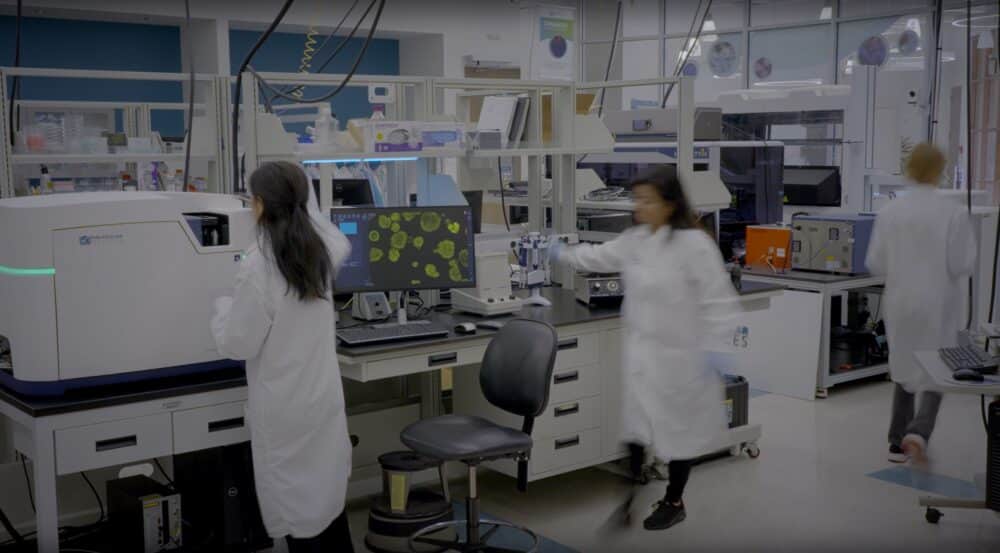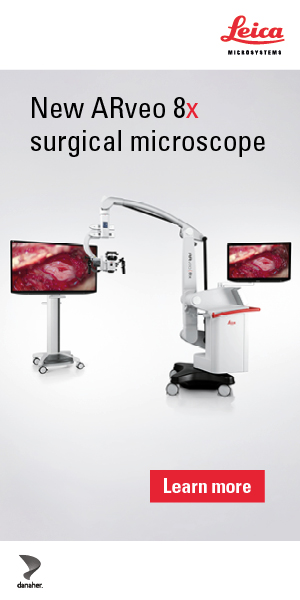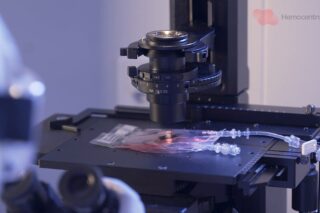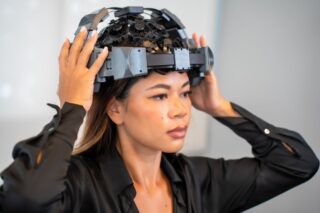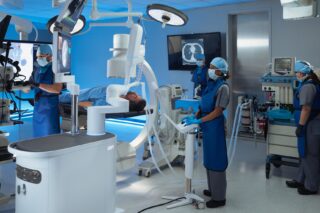Molecular Devices exhibited its advanced microplate readers, AI-powered imaging systems, and versatile lab tools at Forum Labo Paris 2025.
At Forum Labo Paris 2025, Molecular Devices is at the forefront of technological innovation, showcasing its advanced tools for high-throughput analysis, cellular imaging, and 3D biological culture. With a focus on pushing the boundaries of what is possible in laboratory research, the company is demonstrating how its microplate readers, automated imaging platforms, and powerful software solutions are enabling scientists to streamline workflows and obtain more reliable, accurate results.
On the last day of the event, Molecular Devices highlighted key innovations in AI-powered cell culture and imaging techniques, which hold the promise of transforming research in drug discovery and beyond.
How to Get the Most Out of a Microplate Reader
Microplate readers are invaluable tools for laboratories, enabling researchers to conduct high-throughput experiments with precision. Molecular Devices exhibited its microplate reader technology and provided key advice during a session titled “How to Get the Most Out of Your Microplate Reader: From Basic Absorbance to Advanced Imaging.”
We stopped by the stand and spoke with Ramla Khammar, Senior Account Manager France North, who emphasized the importance of optimizing microplate readers for a wide range of applications, including ELISA and colorimetric assays.
“We advise in fluorescence, luminescence, and environmental control with solutions like the Spectral Optimization Wizard,” Khammar explained, noting that this tool allows researchers to quickly find the best excitation and emission wavelengths for their experiments.
The Spectral Optimization Wizard (SOW) is a time-saving feature that helps users avoid the manual process of verifying wavelengths, which can vary due to factors like pH. Instead of spending hours adjusting conditions, the SOW optimizes the settings within 10 minutes. Additionally, the AutoPMT feature automatically normalizes fluorescence detection, preventing issues like photomultiplier saturation.
“AutoPMT saves time and ensures reliability by normalizing the signal based on an internal calibrator,” Khammar added, detailing how this feature helps maintain reproducibility across tests.
To further improve assay accuracy, Molecular Devices also advises using black plates in luminescence assays to reduce crosstalk, a common issue that can lead to inaccurate readings. Khammar explained that using black plates, instead of traditional white ones, minimizes signal spillover from adjacent wells. By combining these strategies with advanced imaging capabilities, Molecular Devices enables researchers to get the most out of their microplate readers, whether they are conducting basic measurements or complex cellular assays.
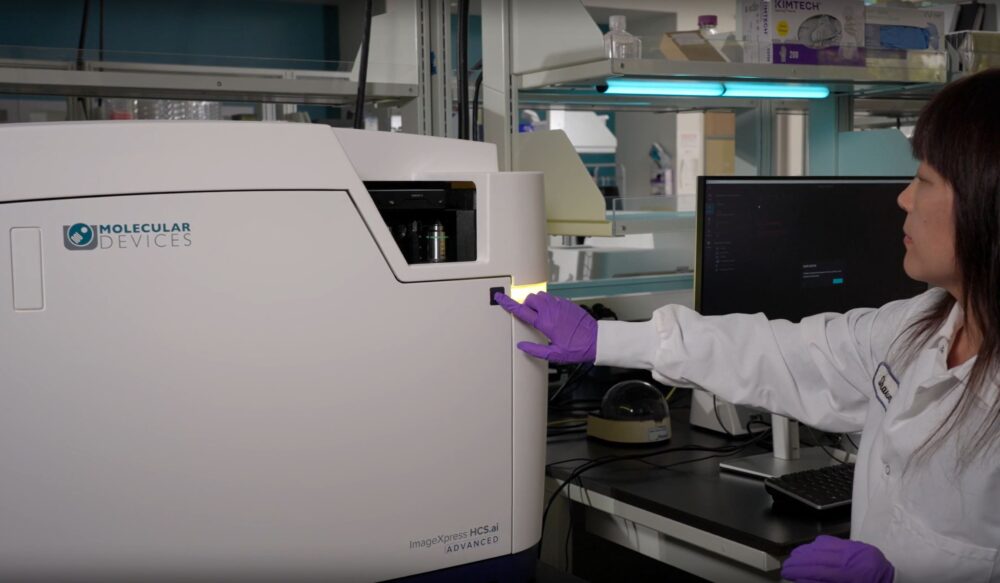
AI and Automated Imaging for Cell Culture and 3D Models
With the increasing complexity of drug discovery and the growing demand for more physiologically relevant models, the field of 3D cell culture is gaining significant traction. On the last day of the event, Molecular Devices dove into the use of AI and automated imaging systems to streamline cell culture processes and enhance the reproducibility of organoid production and other 3D models. The talk, titled “Cell Culture and 3D Models: Contributions of Artificial Intelligence and Automated Imaging,” was presented by Dr. Guillaume Frugier, European Applications Scientist Manager at Molecular Devices.
Dr. Frugier focused on how AI-driven solutions are helping researchers overcome challenges such as the complexity and duration of culture protocols, as well as the difficulties in scaling up 3D models. He featured Molecular Devices’ ImageXpress HCS.ai platform, which integrates AI-powered segmentation and classification capabilities for high-content imaging of 3D biological cultures. These systems allow researchers to fully leverage automated biological printing and intelligent cell culture technologies, such as the BioAssemblyBot and CellXpress.ai platforms, to create more reproducible and scalable models.
These tools are transforming biological research, reducing attrition rates in drug discovery, and supporting the development of personalized medicine.
WATCH a video featuring the new ImageXpres HCS.ai here.
READ our article on the growing interest of organoids: AI & Automated Solutions by Molecular Devices.
An Exemplary Product by Molecular Devices: SpectraMax® I3X and SoftMax® Pro Software
Although the SpectraMax® I3X and SoftMax® Pro Software are not new, they’re exemplary products by Molecular Devices exhibited at the fair.
The SpectraMax I3X is a versatile platform that supports absorbance, fluorescence, and luminescence measurements, making it ideal for a wide range of applications.
“It’s more than just a reader; it’s a platform that can evolve based on user needs,” Khammar explained.
The reader features a unique cartridge system that allows users to add optical components for specific assays, such as Western blotting or TRF-based assays.
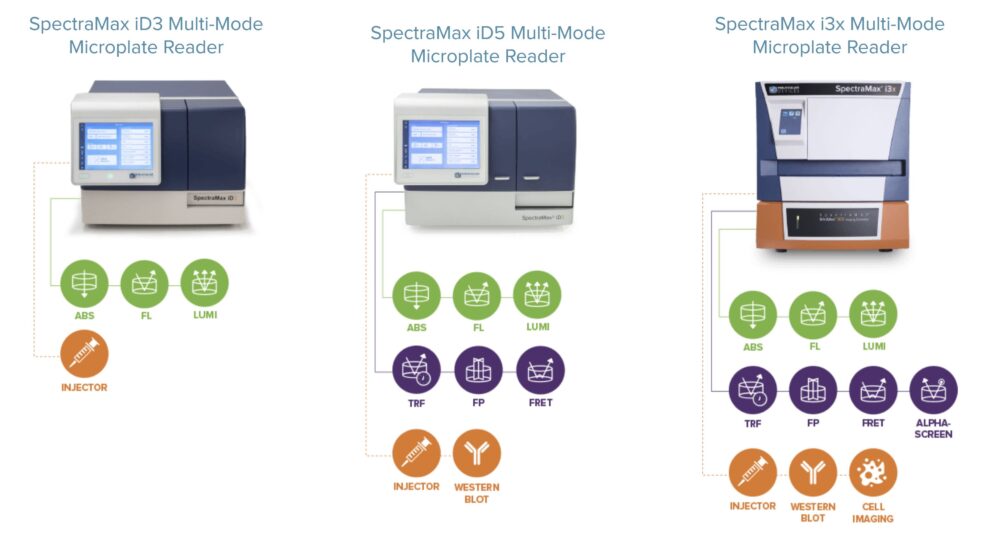
Image: SpectraMax iSeries Microplate Readers. Courtesy of Molecular Devices.
The SoftMax Pro Software is another key component of this system, providing researchers with powerful data analysis capabilities.
“It’s well-known in the pharmaceutical industry for its ease of use and ability to analyze data in real-time,” Khammar said.
The software can handle everything from basic data collection to more complex analyses like image-based quantification, making it an indispensable tool for laboratories focused on high-throughput screening and drug discovery.
Together, the SpectraMax I3X and SoftMax Pro exemplify the flexibility and precision that Molecular Devices is known for, providing laboratories with the tools they need to conduct advanced experiments with confidence. With these products, Molecular Devices is helping researchers save time and achieve more accurate, reproducible results, reinforcing its position as a leader in laboratory technology.
